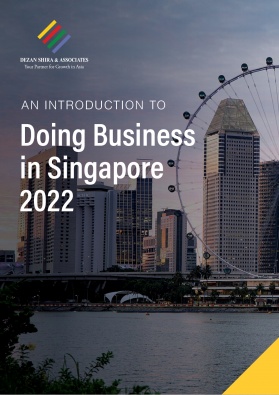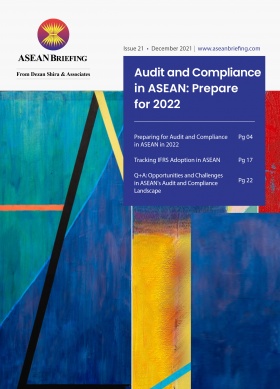Singapore Confronts U.S. Tariffs: Assessing the Impact on Finance, Manufacturing, and Trade
In early April, the United States imposed a sweeping 10 percent tariff on imports from nearly all countries, including Singapore. The move—enacted under the International Emergency Economic Powers Act—was framed as part of a broader strategy to enforce reciprocal trade terms. Despite its free trade agreement and relatively balanced trade with the U.S., Singapore was not granted an exemption.
This escalation in protectionist policy carries major implications for Singapore’s economy. The impact of U.S. tariffs on Singapore exports is already prompting concern among exporters, investors, and policymakers. The financial services sector, which depends heavily on global capital flows and advisory services linked to the U.S. market, may experience disruption. The export-oriented manufacturing industry, particularly electronics and high-tech components, is expected to face reduced demand and higher costs in reaching American consumers. In addition, Singapore’s strategic role as a global trade and logistics hub could be undermined if shipping volumes decline or multinational firms reroute their operations to mitigate tariff exposure.
The ripple effects of the 2025 U.S. tariffs are set to challenge Singapore’s GDP growth forecast and could force businesses to reassess supply chains, pricing, and trade strategies across several key sectors.
Financial services respond to uncertainty
Singapore’s financial sector is tightly integrated with global markets, and the imposition of a blanket tariff by its third-largest trading partner introduces a new layer of uncertainty. In 2024, services exports reached S$528.6 billion, with financial services accounting for 13.5 percent. The U.S. remains a critical market for fund management, investment advisory, and cross-border financial services originating from Singapore.
As markets absorb the impact of the tariff decision, the Monetary Authority of Singapore is widely expected to adjust its monetary policy. Economists predict a reduction in the slope of the Singapore dollar’s nominal effective exchange rate band, aimed at enhancing export competitiveness in a more restrictive global trade environment.
Heightened volatility may drive up demand for foreign exchange hedging, derivatives, and broader risk management instruments. This creates opportunities for Singapore’s banks, financial institutions, and fintech platforms, particularly in treasury and wealth advisory services.
The uncertain climate may lead global investors to rebalance their portfolios, potentially affecting fund flows through Singapore. The city-state’s appeal as a stable and sophisticated financial hub may help absorb some of the shocks, but earnings pressure on financial institutions with U.S. exposure remains a concern.
Export manufacturing faces a turning point
The manufacturing sector in Singapore is deeply exposed to global trade, with electronics and precision engineering among its most valuable export segments. In December 2024, non-oil domestic exports grew by 9.0 percent year-on-year, driven largely by strong demand for semiconductors and other electronics components. A significant share of these goods is destined for the U.S. market, either directly or as part of global supply chains.
There are concerns that multinational corporations may accelerate the relocation of production capacity to other countries. Prime Minister Lawrence Wong has acknowledged the risk of retrenchments if companies begin shifting operations closer to the U.S. or into untaxed jurisdictions.
Nonetheless, Singapore’s strong legal framework, advanced infrastructure, and skilled workforce continue to attract investment in high-value manufacturing. Innovation hubs such as Jurong Innovation District and Seletar Aerospace Park may double down on productivity, automation, and product sophistication to mitigate exposure to tariff-related risks.
Trade and logistics hub navigates reduced volumes
Singapore’s central role in global shipping and air freight logistics is another area vulnerable to the indirect consequences of U.S. tariffs. The city-state is the world’s busiest transshipment port, handling more than 37 million twenty-foot equivalent units (TEUs) annually. Its air cargo terminals serve as vital links for time-sensitive goods flowing between Asia, North America, and Europe.
Transport services made up 32.7 percent of Singapore’s S$528.6 billion services exports in 2024. A decline in trans-Pacific shipping activity—whether from U.S. import contraction or multinational route adjustments—could affect revenue for port operators, freight forwarders, and logistics providers.
Small and mid-sized enterprises that rely heavily on U.S. re-exports may face rising compliance costs, shipment delays, and margin pressure if trade volumes decline.
However, Singapore’s diversified trade architecture may help soften the blow. The country is an active member of the Comprehensive and Progressive Agreement for Trans-Pacific Partnership (CPTPP), the Regional Comprehensive Economic Partnership (RCEP), and more than 25 bilateral free trade agreements. These frameworks offer alternate pathways to sustain export growth through deeper integration with Asia-Pacific, European, and emerging market economies.
In addition, Singapore’s continued investments in digital trade infrastructure, customs automation, and regional supply chain resilience position it to adapt to evolving global trade patterns.
Positioning Singapore amid ASEAN’s emerging potential
While U.S. tariffs may disrupt existing trade flows, Singapore is uniquely positioned to lead the next chapter of regional integration and growth. As ASEAN continues its ascent as one of the world’s fastest-growing regions, Singapore’s role as a gateway to Southeast Asia is set to expand.
ASEAN’s combined GDP is projected to reach US$4.3 trillion by end of 2025, with intra-ASEAN trade and foreign investment on the rise. The region’s consumer base of over 670 million people offers significant demand growth, particularly in sectors like digital services, advanced manufacturing, logistics, and green infrastructure.
Singapore has already capitalized on this trajectory. As of 2024, it remains one of the largest sources of FDI into ASEAN, accounting for over US$115 billion in cumulative investment stock across member states. Its strategic connectivity—bolstered by Changi Airport’s air links to over 130 cities and the Port of Singapore’s top transshipment status—makes it the preferred entry point for global companies expanding into the region.
The city-state’s innovation ecosystem is also evolving. Singapore ranked fifth globally in the 2023 IMD World Competitiveness Ranking and is rapidly advancing in digital trade facilitation through initiatives like the Networked Trade Platform and the Green Economy Agreement with Australia, which provide added value to firms operating across ASEAN.
By continuing to invest in technology, sustainability, and regional partnerships, Singapore is not just weathering the global trade headwinds but helping shape the next wave of ASEAN-led growth.
About Us
ASEAN Briefing is one of five regional publications under the Asia Briefing brand. It is supported by Dezan Shira & Associates, a pan-Asia, multi-disciplinary professional services firm that assists foreign investors throughout Asia, including through offices in Jakarta, Indonesia; Singapore; Hanoi, Ho Chi Minh City, and Da Nang in Vietnam; besides our practices in China, Hong Kong SAR, India, Italy, Germany, and USA. We also have partner firms in Malaysia, Bangladesh, the Philippines, Thailand, and Australia.
Please contact us at asean@dezshira.com or visit our website at www.dezshira.com and for a complimentary subscription to ASEAN Briefing’s content products, please click here.










